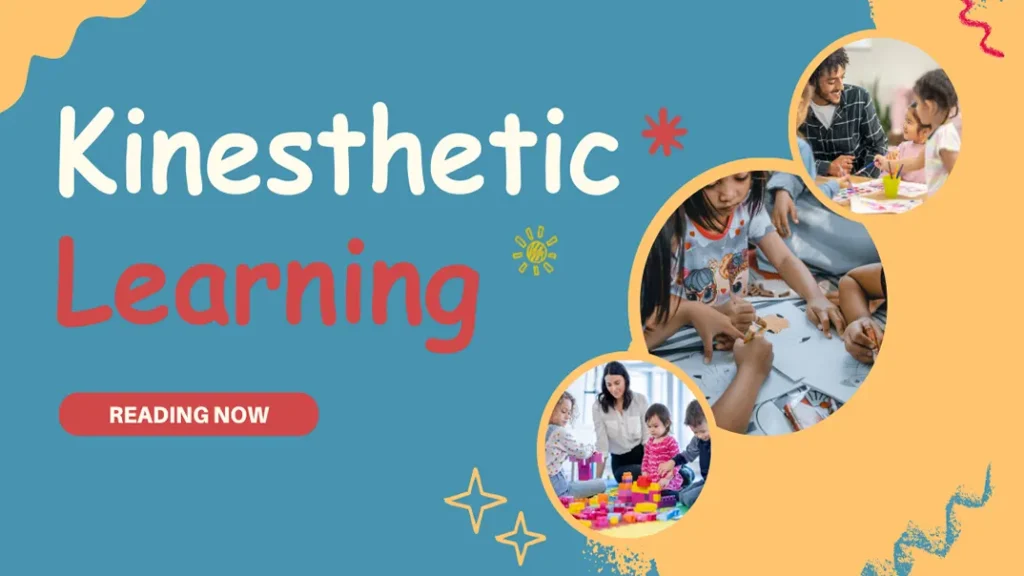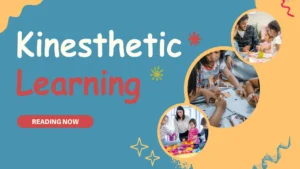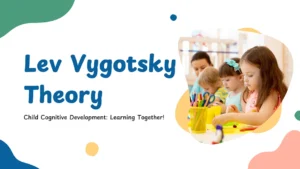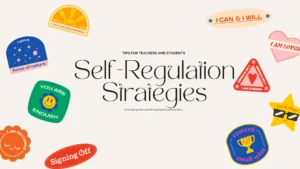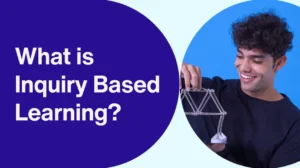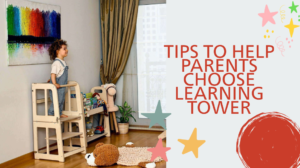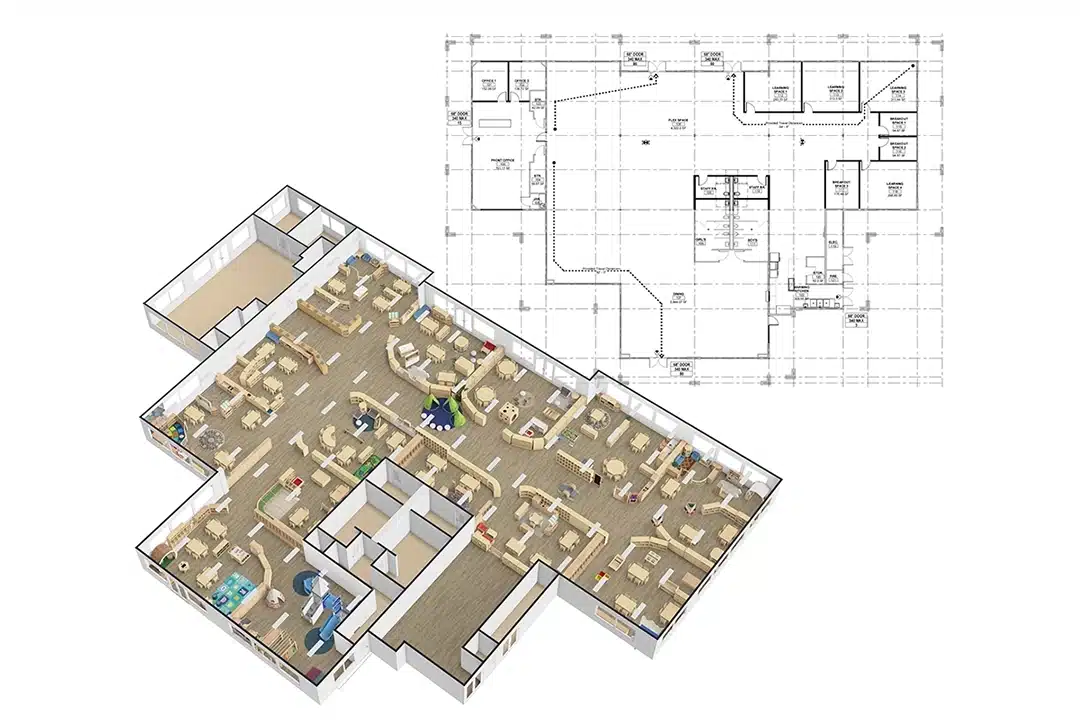Kinesthetic learning is a hands-on learning style where children absorb knowledge through physical movement and sensory exploration. This approach is sometimes referred to as “tactile learning” because it emphasizes the sense of touch and bodily movement.
Unlike traditional learning methods that focus on listening or watching, this approach gives children the freedom to learn by doing. This advantage leads to better engagement, memory retention, and emotional connection to the material—especially in early childhood settings where active exploration is key.
By understanding how to support a kinesthetic learner, educators and parents can create rich learning environments where these children feel understood, motivated, and successful. Read on to discover practical, proven strategies that make learning more meaningful for every kinesthetic learner.
What Is Kinesthetic Learning?
Kinesthetic learning is a style of learning where individuals absorb information most effectively through movement, touch, and direct physical involvement. Kinesthetic learners understand new ideas by actively engaging with tasks—such as manipulating objects, experimenting, or practicing skills. This approach is often described as “learning by doing,” and it highlights the importance of hands-on experiences in building understanding and memory.
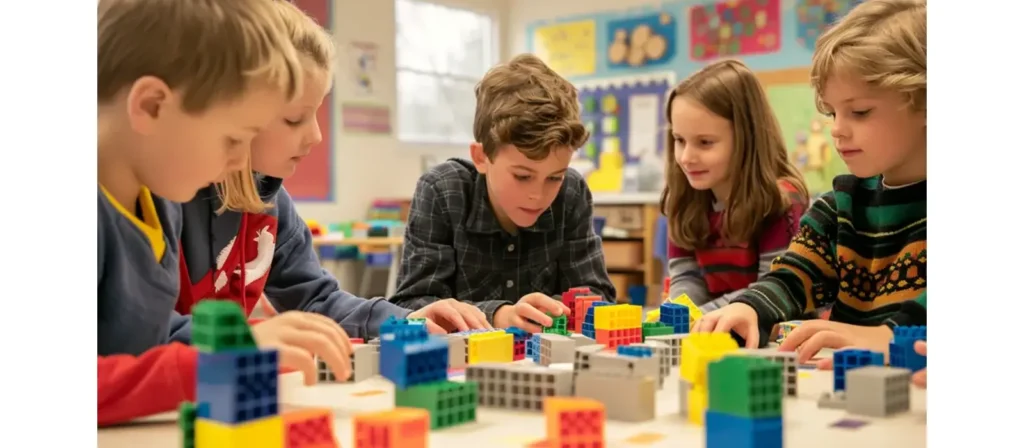
This learning style is rooted in the body’s interaction with the environment. Kinesthetic learners often rely on muscle memory and physical repetition to retain knowledge. For them, learning is not a passive act but a full-body experience that involves movement, coordination, and hands-on involvement.
In early childhood, kinesthetic learning is especially prominent, as young children naturally explore the world by using their bodies. This makes the kinesthetic learning style both developmentally appropriate and foundational for many aspects of early education. At its core, kinesthetic learning recognizes that movement and physical experience are not distractions but essential pathways to understanding and remembering new information.
Examples of Kinesthetic Learning
Kinesthetic learning is more than just movement—it’s about how physical activity is directly connected to learning and comprehension. Here are some clear, outcome-based kinesthetic learning examples that illustrate how physical actions can support cognitive development:
- Tactile Math Tools: Using blocks, beads, or number lines allows learners to physically manipulate quantities and solve problems with their hands.
- Story Reenactment: Acting out stories or fairy tales helps children internalize plot, character development, and sequencing in an expressive, movement-rich way.
- Movement-Based Learning Games: Activities like letter-hopscotch or number races turn review into a physical, engaging experience that supports memory and focus.
- Hands-On Science Tasks: Children investigate simple scientific ideas by pouring, sorting, or building models—experiencing cause and effect through direct interaction.
- Sensory Tracing Activities: Tracing letters or numbers in sand, finger paint, or textured surfaces helps reinforce recognition through touch and motion.
- Life Skills Through Pretend Play: Role-playing everyday scenarios like grocery shopping or cooking gives learners a chance to practice vocabulary and math in a physical, relatable way.

What Is a Kinesthetic Learner?
A kinesthetic learner is someone who understands and remembers information best through physical movement and hands-on interaction with the environment. Instead of sitting still and passively receiving information, kinesthetic learners need to touch, move, and engage actively in order to learn effectively.
These learners often rely on bodily sensations and physical actions to process new concepts. They tend to excel when they can manipulate objects, participate in activities, or perform tasks that involve movement.
Kinesthetic Learner Characteristics Include:
- A strong preference for hands-on activities like crafts, experiments, or construction toys
- High energy levels and a natural need for movement
- An excellent sense of physical coordination and body awareness
- A tendency to act out ideas or physically mimic what they’re learning
- Better retention of information when it’s tied to physical actions or routines
Recognizing a kinesthetic learner early can significantly improve their educational experience. These learners benefit from movement-rich teaching methods, such as using songs with actions, learning stations, or tasks that involve building, sorting, or role-playing. By tapping into their need for motion, educators and caregivers can help kinesthetic learners thrive both academically and socially.
Benefits of Kinaesthetic Learning Style
The kinesthetic learning style offers unique advantages for children who process information best through action and physical engagement. By recognizing these benefits, educators and parents can better appreciate why movement and hands-on experience are essential pathways to learning. Beyond improving knowledge retention, kinesthetic learning also nurtures creativity, confidence, and real-world problem-solving abilities.
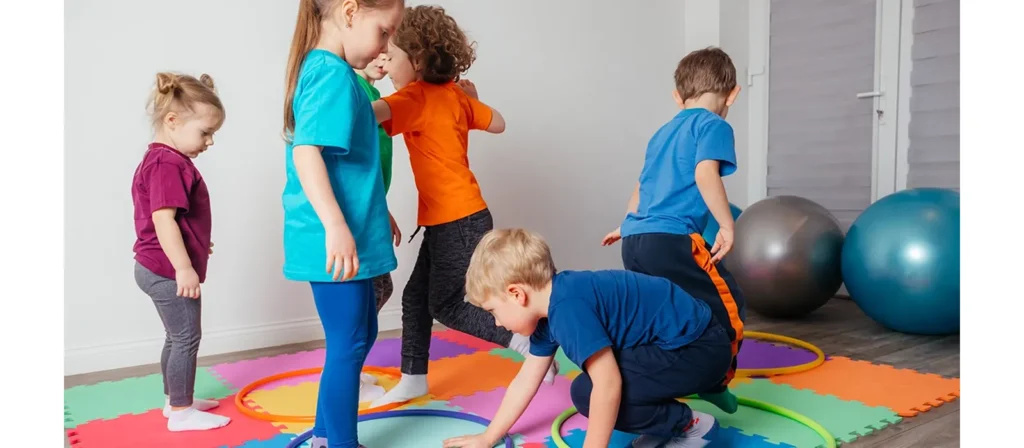
Enhanced Memory Retention
When learners physically interact with preschool materials or act out concepts, they build stronger memory connections. Movement and repetition engage muscle memory, making information easier to recall. This approach is especially valuable in early childhood, where concrete experiences often form the foundation for abstract understanding.
Greater Engagement and Focus
Kinesthetic learners are naturally more attentive when they are actively involved. Instead of passively listening, they thrive in dynamic environments that include building, moving, or experimenting. This active participation keeps them motivated and minimizes restlessness that can arise in traditional, lecture-based settings.
Development of Practical Skills
The kinesthetic learning style emphasizes hands-on practice, which strengthens both fine and gross motor skills. Children learn to manipulate objects, coordinate movements, and solve problems through direct interaction. These skills are not only academic but also valuable in everyday life, preparing them for tasks that require dexterity and coordination.
Boosted Creativity and Expression
Physical exploration allows learners to express themselves in unique ways. Whether through role-playing, art projects, or dramatic movement, kinesthetic learners often showcase creativity and innovation. Their ability to connect ideas with actions helps them develop original solutions and think outside the box.
Improved Confidence and Independence
When kinesthetic learners are encouraged to learn through doing, they experience a sense of accomplishment. Successfully completing tasks, building projects, or solving challenges boosts their self-confidence. This independence supports resilience and a positive attitude toward learning.
Stronger Connection to Real-Life Learning
Because kinesthetic learning is rooted in experience, it often bridges the gap between abstract concepts and practical applications. Learners can immediately see how lessons connect to real life, making education more meaningful and relevant to their everyday world.
Kinesthetic Learning Strategies
Supporting a kinesthetic learner goes beyond adding movement to the day—it involves thoughtful planning, intentional teaching, and creating an environment that values learning by doing. The strategies below are designed to help educators and caregivers harness the power of kinesthetic learning in early childhood settings.
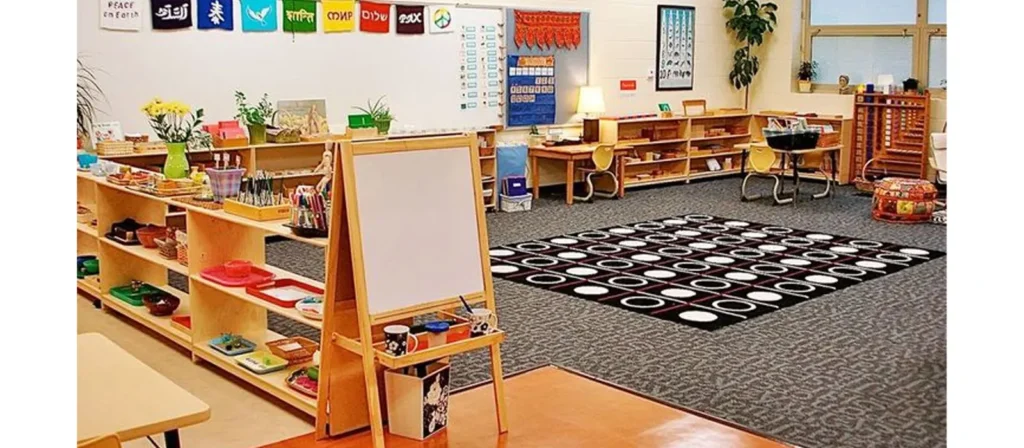
1. Create a Kinesthetic-Friendly Environment
The learning environment itself plays a crucial role in supporting kinesthetic tactile learners. By designing a space that values movement rather than restricting it, educators send a clear message that physical engagement is part of learning—not a disruption. Keep pathways open, materials reachable, and spaces flexible so children can shift between floor work, tables, and movement zones without friction.
- Offer flexible seating (floor cushions, wobble stools, standing desks).
- Arrange open areas for group movement and floor-based tasks.
- Stock low shelves with tactile materials.
2. Use Hands-On Materials
Incorporating manipulative tools helps kinesthetic learners engage directly with the subject matter. Handling objects makes abstract concepts concrete, while active participation enhances comprehension and retention. Keep classroom materials varied, durable, and ready for independent exploration during centers or small groups.
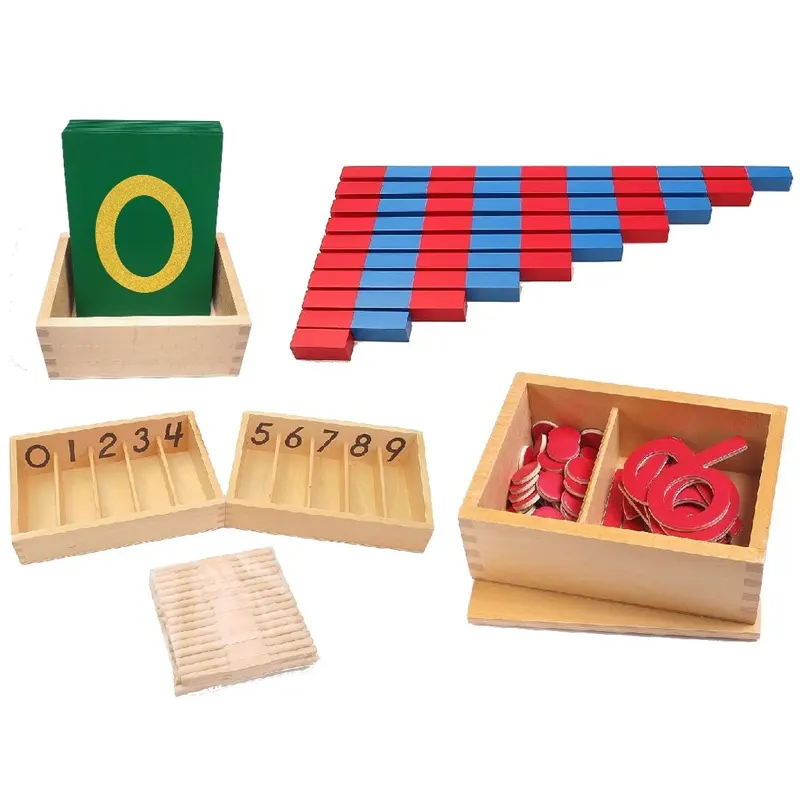
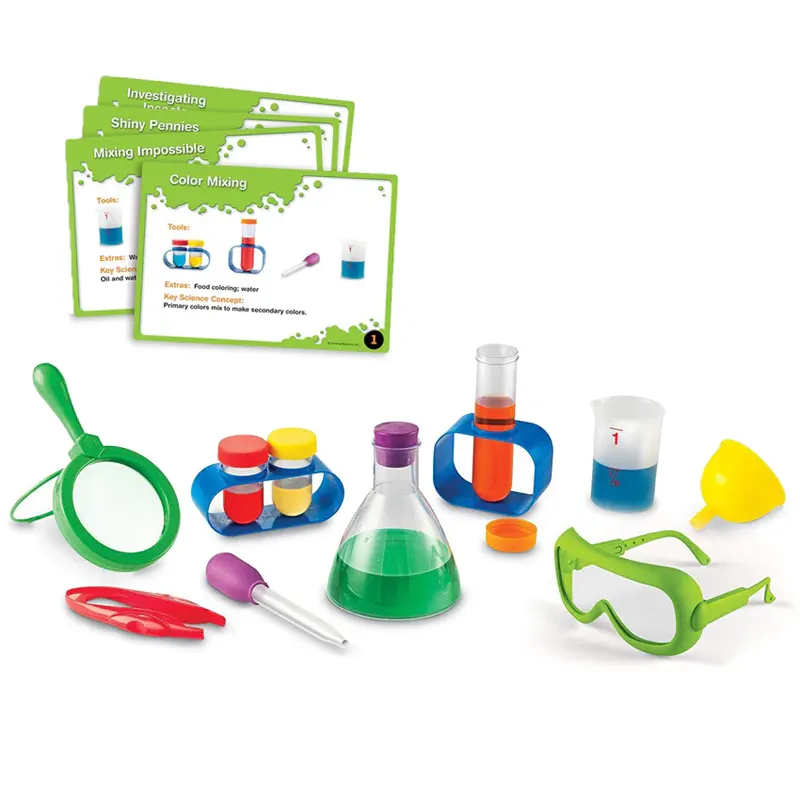
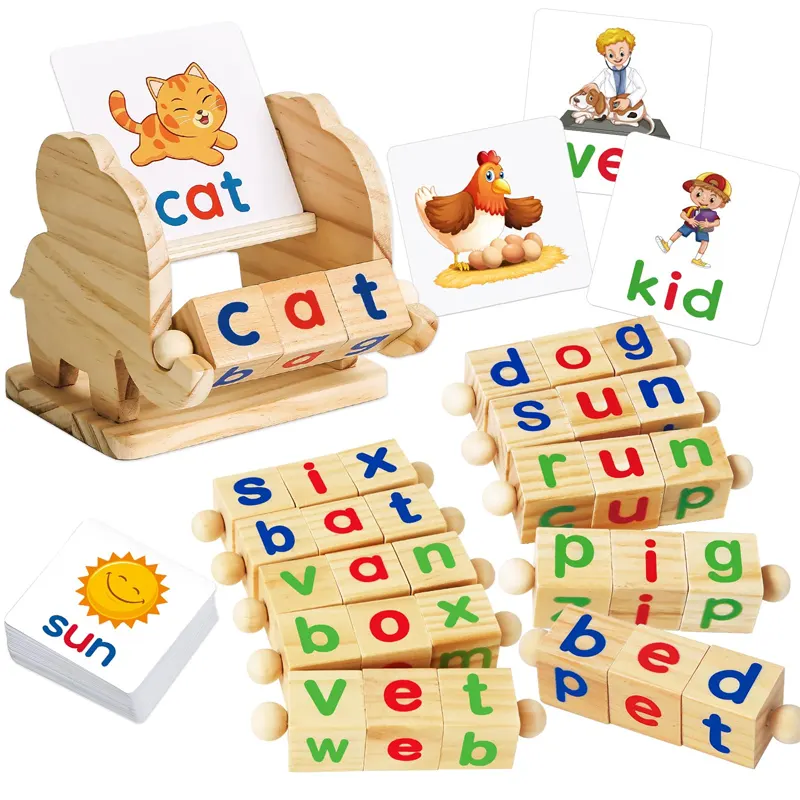
- Math: counters, beads, ten frames, number lines.
- Literacy: letter magnets, textured cards, tracing boards.
- Science: magnifiers, simple scales, natural objects.
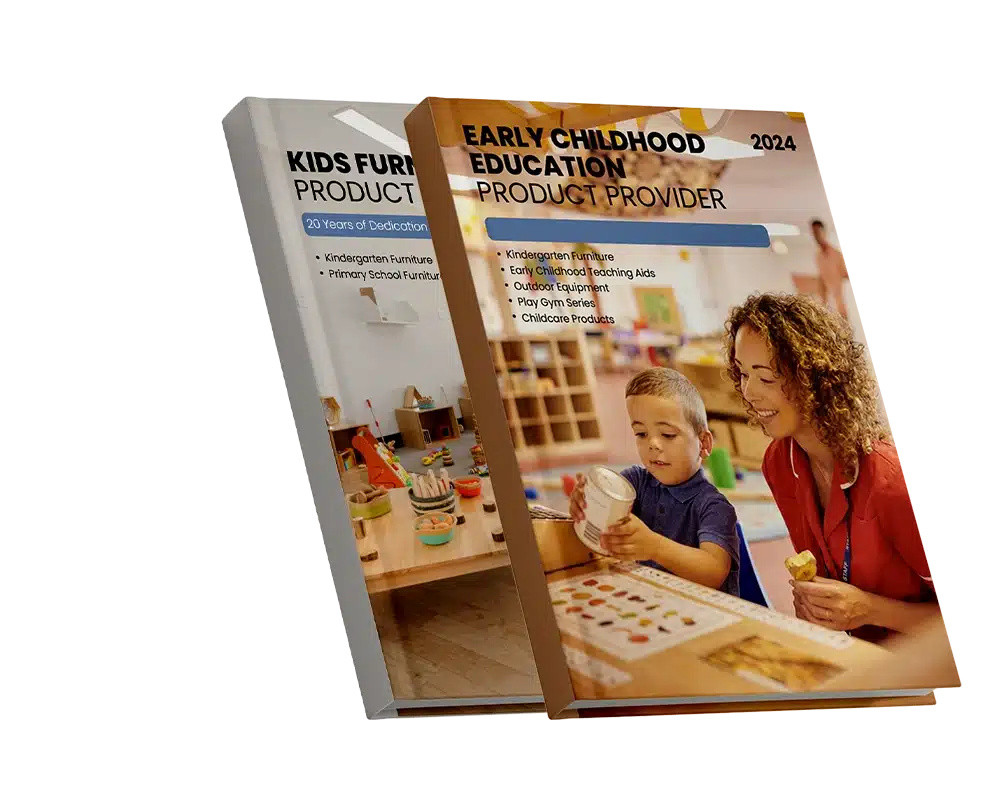
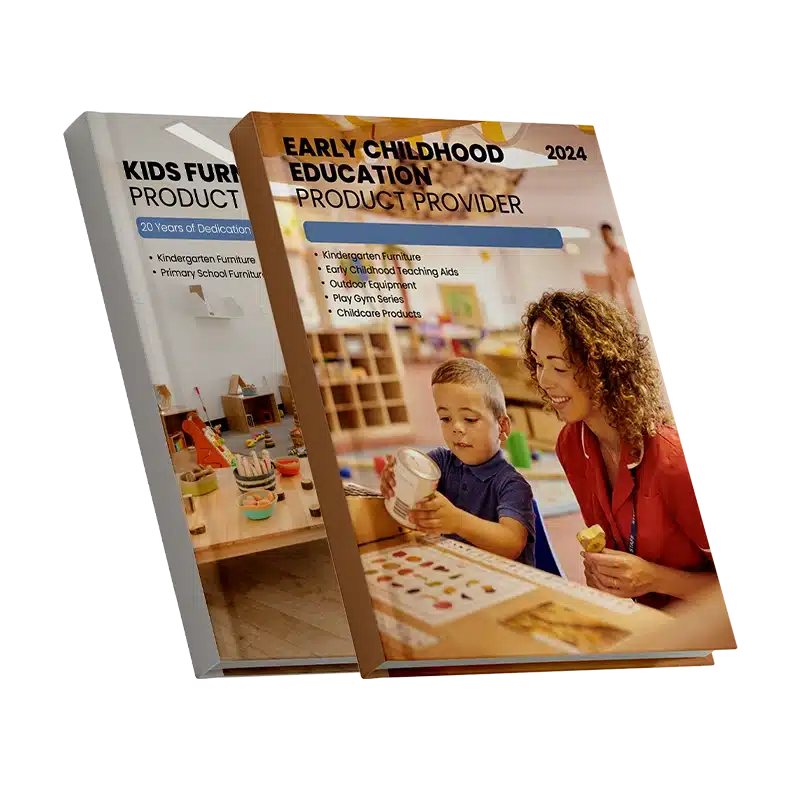
3. Incorporate Hands-On Activities
Kinesthetic learners benefit most when they can physically manipulate objects. Activities such as building models, using manipulatives in math, or conducting science experiments help them translate abstract concepts into concrete understanding. These tasks provide direct involvement, which strengthens both comprehension and retention.
4. Use Movement to Reinforce Lessons
Allowing learners to move while studying can significantly improve focus and engagement. For example, acting out vocabulary words, using body movements to represent math problems, or playing role-based games transforms lessons into memorable experiences. Movement not only keeps learners attentive but also makes lessons more dynamic.
5. Break Lessons into Short, Active Segments
Kinesthetic tactile learners often struggle with long periods of passive instruction. Structuring lessons into shorter segments that alternate between instruction and activity ensures better concentration. Quick physical breaks, mini-projects, or active discussions allow learners to reset and remain engaged throughout the lesson.
6. Encourage Creative Expression Through Movement
Dance, drama, and art projects offer kinesthetic learners powerful ways to process information. Encouraging students to express concepts through gestures, drawings, or performances taps into their creativity while reinforcing academic content. These outlets not only support understanding but also foster confidence and self-expression.
7. Apply Multi-Sensory Techniques
Combine movement with other sensory inputs. For example, let children trace letters in sand while saying the sound, or match tactile flashcards with real-life objects. Engaging multiple senses supports deeper learning and accommodates varied learning styles.
8. Include Outdoor Learning and Exploration
Outdoor environments naturally support kinesthetic learning. Nature walks, garden activities, and large-movement games offer rich learning experiences beyond the classroom walls. Children can collect, sort, build, or observe in ways that align with their physical learning style.
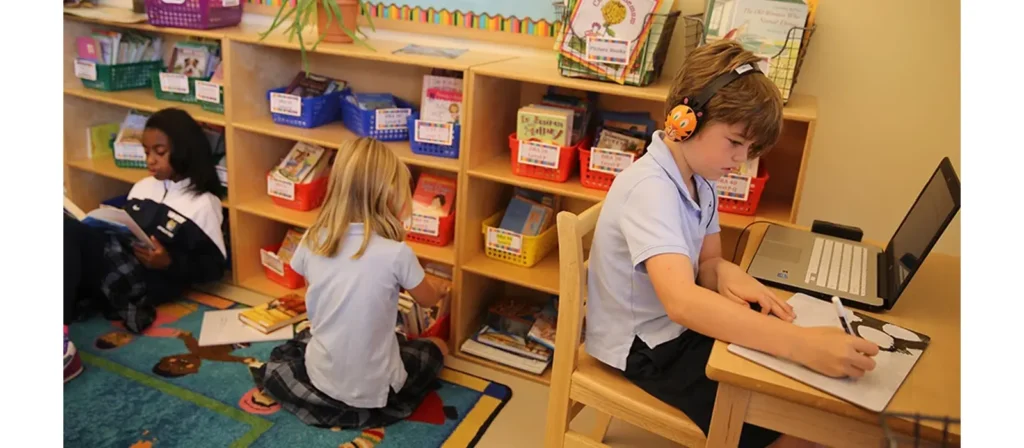
VARK Learning Styles: Kinesthetic Learning vs. Other Learning Styles
The VARK model identifies four main learning styles: Visual, Auditory, Reading/Writing, and Kinesthetic. Each style represents a different way of taking in and processing information. Understanding these differences helps teachers and parents create balanced learning environments that support every type of learner.
| Learning Style | Core Characteristics | Best Learning Methods |
|---|---|---|
| Visual Learners | Learn best through images, charts, diagrams, and spatial understanding | Use diagrams, mind maps, videos, and color coding |
| Auditory Learners | Learn best by listening to explanations, discussions, and spoken instructions | Benefit from lectures, discussions, audiobooks, and oral repetition |
| Reading/Writing Learners | Prefer written words for both intake and output | Thrive with note-taking, reading textbooks, and writing reflections |
| Kinesthetic Learners | Learn best through movement, touch, and physical experience | Benefit from role-play, experiments, building, dramatization, and outdoor exploration |
What makes kinesthetic learning distinct is that it turns abstract knowledge into action. For example, while a visual learner studies a diagram of the human heart, and an auditory learner listens to an explanation, a kinesthetic tactile learner needs to hold a model, trace the parts, or even simulate the heartbeat with movement. This “learning by doing” brings concepts to life and makes them stick.
7 Activities for Kinesthetic Learning
Kinesthetic tactile learners thrive when they can touch, move, and actively explore. Below are ten effective activities that integrate physical engagement with academic content, making learning both fun and memorable.
1. Role-Play a Story
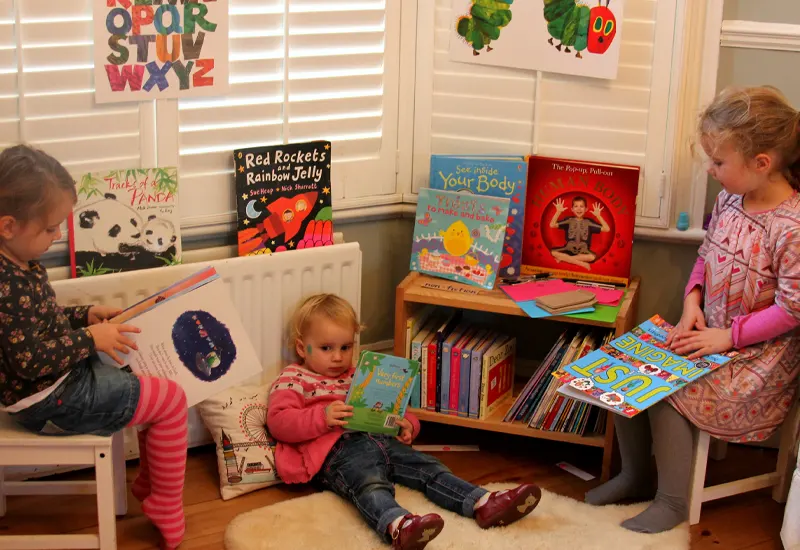
Acting out a story gives kinesthetic learners the chance to transform reading into a lived experience. By physically embodying characters, using gestures, and moving through scenes, children connect emotionally with the narrative. This approach strengthens comprehension, recall, and self-expression while making reading more engaging and memorable.
Steps:
- Read the story aloud together.
- Assign roles to each learner.
- Encourage children to act out the story using movement and dialogue.
- Pause to reflect on key scenes.
2. Jumping Number Line
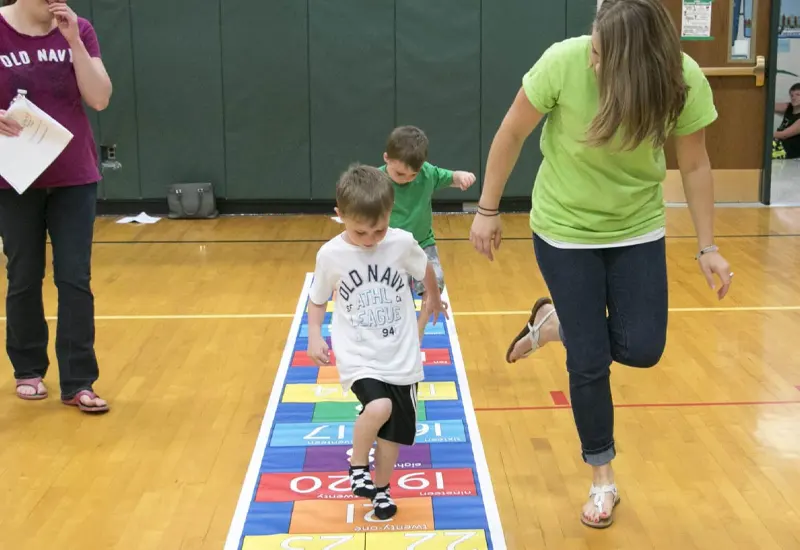
A floor number line turns addition and subtraction into full-body problem solving. Each jump represents a unit, so learners feel quantity changes rather than just seeing them. The physical pacing helps internalize directionality (forward/backward) and reinforces counting-on strategies. It’s especially effective for students who need movement to sustain focus.
Steps:
- Tape a number line (0–20) on the floor.
- Call out a problem (e.g., 4 + 3 or 9 − 5).
- Learners stand on the start number and jump units to solve.
- Have the group confirm answers and discuss different paths.
3. Vocabulary Treasure Hunt
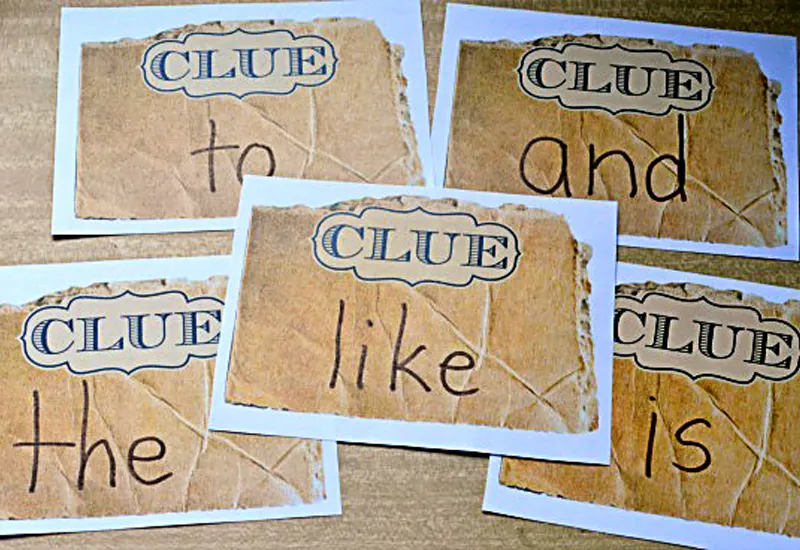
Hiding word cards turns vocabulary into an adventure that blends reading, memory, and motion. Learners search, read, and act out meanings, anchoring new terms to embodied experience. The novelty of the hunt boosts motivation, while the enactment cements understanding. It also builds quick retrieval as words are revisited on a classroom wall.
Steps:
- Hide vocabulary cards around the room.
- Give clues or definitions for a target word.
- Find, read, and act out the word before revealing it.
- Postcards on a word wall and use each in a sentence.
4. Sink or Float Lab
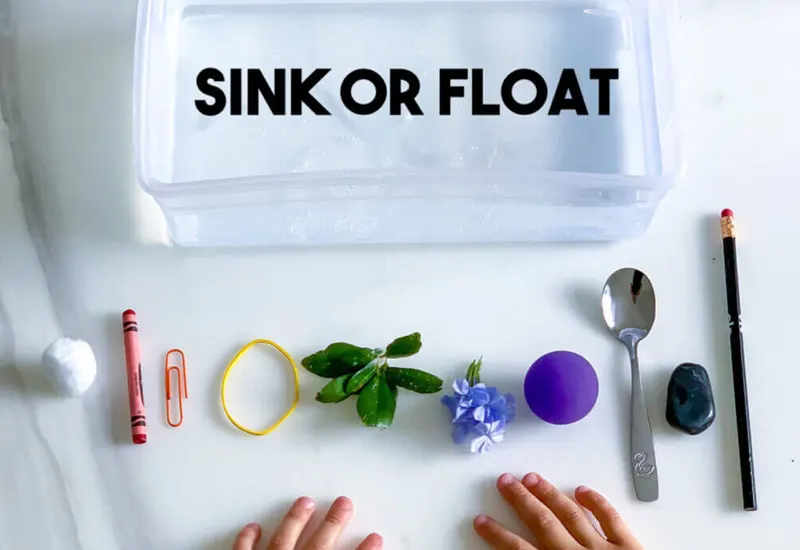
Hands-on prediction and testing help learners grasp density through cause-and-effect they can see and feel. Handling objects, making guesses, and recording outcomes turn abstract science into concrete patterns. Repeated trials promote inquiry habits—observe, test, conclude. The shared excitement of reveals keeps engagement high from start to finish.
Steps:
- Pose the question: “Will it sink or float?”
- Predict outcomes for several small objects.
- Test items one by one in water and chart the results.
- Explain patterns in simple terms and revisit tricky cases.
5. Phonics Hopscotch
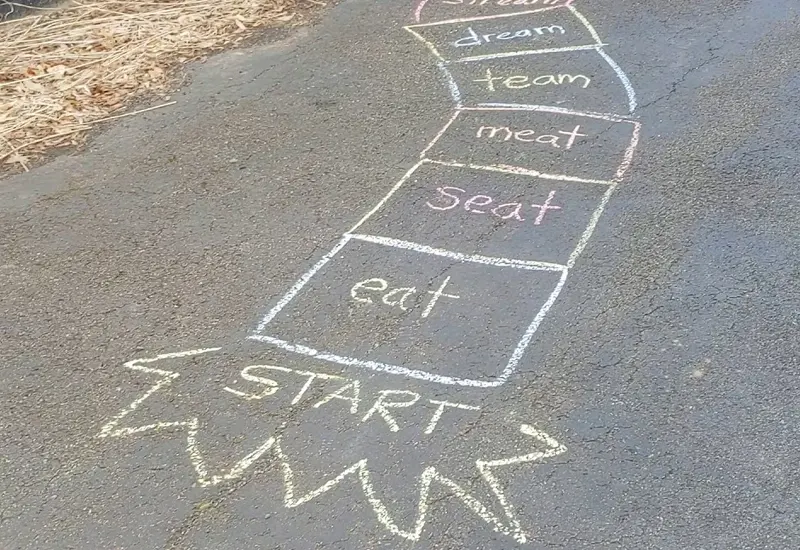
A letter-sound grid on the floor lets children “land on” phonemes with their feet. Hearing a sound and hopping to the matching letter or picture builds rapid sound–symbol mapping. The game-like format encourages repetition without fatigue and supports blending as learners hop across tiles to form words. It’s literacy with rhythm and aim.
Steps:
- Draw a hopscotch grid labeled with letters or picture cues.
- Call a target sound; learners hop to its match.
- Chain two–three tiles to blend simple words.
- Swap roles so students call sounds for peers.
6. Leaf Hunt and Classification
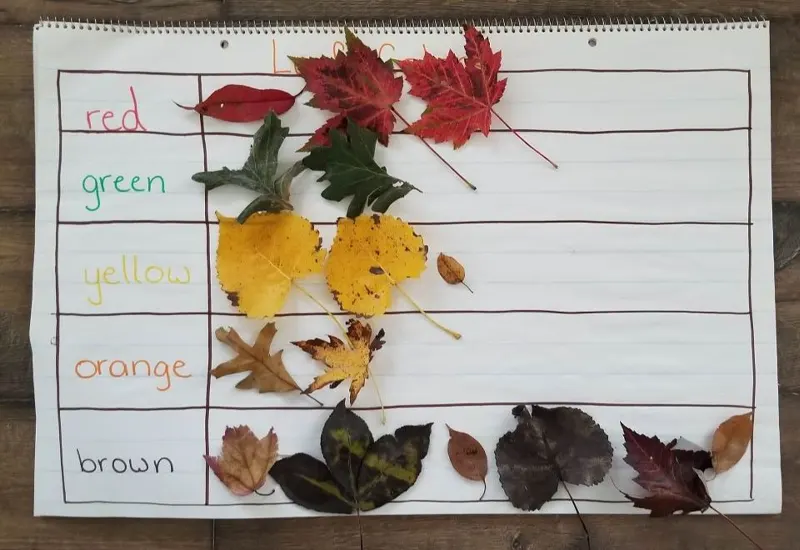
An outdoor search connects science to real textures, shapes, and colors. Collecting and then sorting leaves by attributes makes classification tangible and visual. Learners practice comparing, grouping, and justifying choices, all while moving with purpose. The display they create becomes a living reference for later lessons.
Steps:
- Set boundaries and safety rules for a short walk.
- Each learner collects several different leaves.
- Sort by size, shape, edge, or color and explain choices.
- Mount sorted sets on chart paper and label categories.
7. Market Day Simulation Dramatic Play
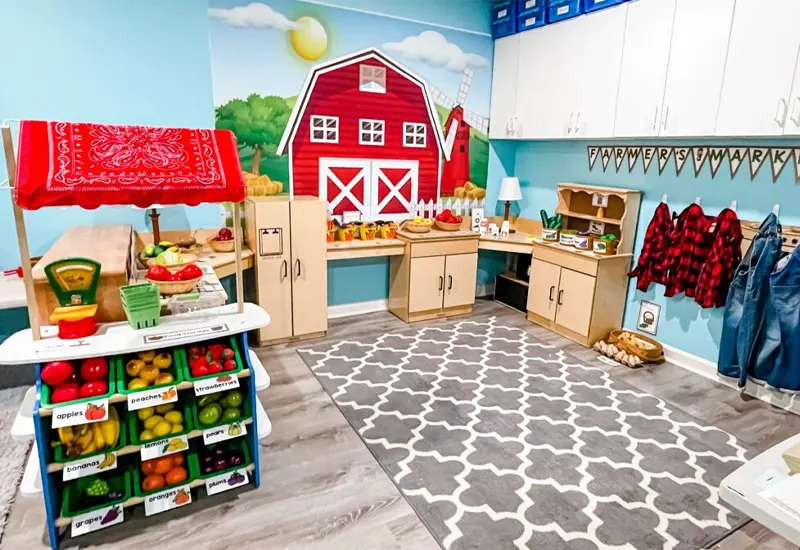
A pretend market lets children negotiate, count, and make change while moving, talking, and handling objects. The roles of buyer and seller create authentic reasons to use math and language. The tactile flow of goods and tokens makes value, price, and exchange concrete. Reflection ties real-world actions back to concepts.
Steps:
- Set up simple “stalls” with labeled prices.
- Assign buyers/sellers and distribute play money.
- Buy, sell, total, and make change during timed rounds.
Classroom Jobs for Kinesthetic Learners
Classroom jobs are an excellent way to channel the energy of kinesthetic learners into meaningful responsibilities. These roles allow them to move, interact, and contribute to the classroom community while reinforcing their natural learning style. Giving kinesthetic learners active jobs helps them stay engaged, build responsibility, and learn through action.
- Line Leader or Door Holder
Serving as the line leader or door holder gives kinesthetic learners a chance to move frequently and take an active role in class routines. These simple responsibilities help them focus by pairing structure with movement. - Materials Manager
A student who distributes or collects supplies like books, papers, or manipulatives gets to use their energy productively. For kinesthetic learners, handling objects reinforces organizational skills and keeps them engaged. - Board or Technology Assistant
Writing notes on the board, setting up projectors, or helping with classroom technology taps into hands-on skills. This role provides a physical task that makes learning tools feel more interactive and less abstract. - Library or Book Helper
Organizing books, returning them to shelves, or setting up the reading corner provides tactile involvement. Kinesthetic learners enjoy the physical motion of arranging and sorting, while also connecting to literacy. - Plant or Pet Caretaker
Watering plants or feeding a class pet offers responsibility tied to daily movement. For kinesthetic learners, caring for something living provides both routine action and emotional connection. - Classroom Messenger
Delivering notes or materials to other teachers or offices gives kinesthetic learners a purposeful way to walk and move. This job allows them to release energy while serving a real classroom need.
Challenges Faced by Kinesthetic Learners
While the kinesthetic learning style offers many advantages, children who depend on movement and physical engagement often encounter obstacles in traditional classroom settings. These challenges stem largely from environments that prioritize listening and visual learning, making it harder for kinesthetic learners to demonstrate their strengths. Understanding these barriers is essential for creating more inclusive learning opportunities.
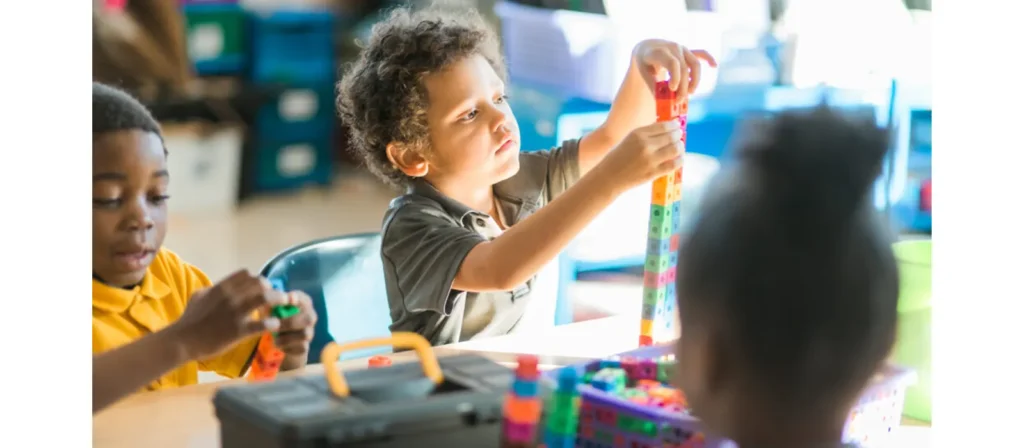
Difficulty with Long Periods of Inactivity
Many classrooms are designed around sitting still, listening, and writing quietly. For kinesthetic learners, remaining inactive for extended periods often leads to restlessness, fidgeting, and reduced focus. What may look like misbehavior is usually a natural response to the need for movement.
Struggles with Traditional Assessment Methods
Standardized tests, written exams, and long reading assignments can put kinesthetic learners at a disadvantage. Because their strengths lie in hands-on application, they may struggle to fully express what they know in static, paper-based formats. This can create an inaccurate picture of their true abilities.
Misinterpretation of Behavior
Teachers and peers sometimes misinterpret the behaviors of kinesthetic learners—such as tapping, pacing, or doodling—as signs of distraction or lack of discipline. In reality, these actions are often coping mechanisms that help them concentrate and process information.
Limited Access to Movement-Friendly Resources
Not all classrooms are equipped with the educational materials or space needed for active, hands-on learning. Without opportunities to manipulate objects, explore through touch, or move freely, kinesthetic learners may feel disengaged and overlooked.
Lower Confidence in Traditional Learning Environments
When their natural style of learning isn’t recognized, kinesthetic learners may develop frustration or self-doubt. Struggling to succeed in conventional formats can negatively impact their confidence, even though they often excel when given opportunities to learn through movement.
FAQs
1. What is a kinesthetic learner definition?
A kinesthetic learner is someone who understands and remembers information best through movement, touch, and hands-on activities. They learn by doing rather than just watching or listening.
2. How can I identify a kinesthetic learner?
You can identify a kinesthetic learner by noticing if they struggle to sit still, prefer building or experimenting, and often use gestures or movement when processing ideas.
3. What Does It Mean to Be a Kinesthetic Learner?
Being a kinesthetic learner means that physical activity and tactile engagement are essential for learning. These learners thrive when lessons involve action, role-play, or real-world practice.
4. What are the traits of a kinesthetic learner?
Kinesthetic learners are energetic, enjoy hands-on activities, and often fidget when inactive. They remember best by physically engaging with material, using movement to reinforce understanding.
5. Do kinesthetic learners have ADHD?
Not necessarily. Kinesthetic learners and children with ADHD may both show high activity levels and difficulty sitting still, but kinesthetic learning is a learning style, while ADHD is a medical condition. A kinesthetic learner simply processes information best through movement and hands-on experiences.
6. What are the weaknesses of a kinesthetic learner?
Kinesthetic learners may struggle with long lectures, traditional tests, and tasks that require sitting still for extended periods. Their need for movement can be misinterpreted as inattention, making it harder for them to succeed in passive learning environments.
Conclusion
Kinesthetic learning is more than just a preference for movement. It is a powerful style that helps children connect ideas to action, making knowledge tangible and memorable. Recognizing this style is the first step toward building classrooms that value diverse ways of learning.
Supporting kinesthetic learners means honoring the natural ways children discover the world: through touch, motion, and direct experience. With thoughtful teaching methods and flexible learning environments, we can unlock their full potential and ensure they thrive both inside and outside the classroom.

